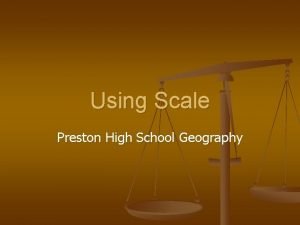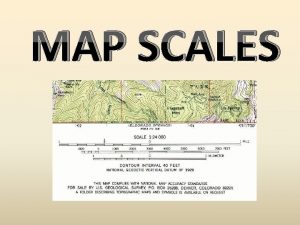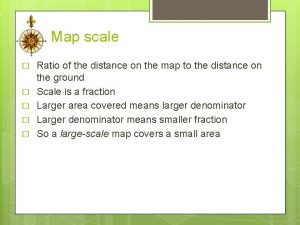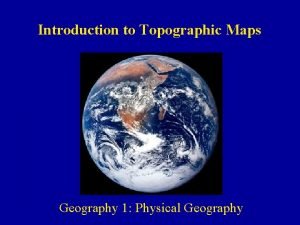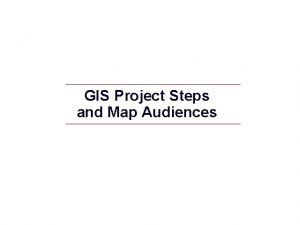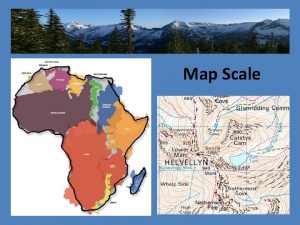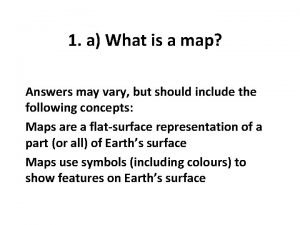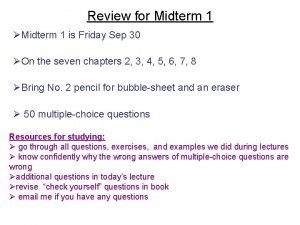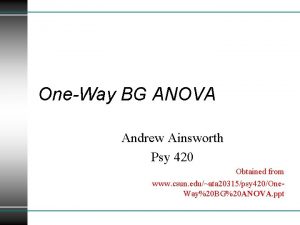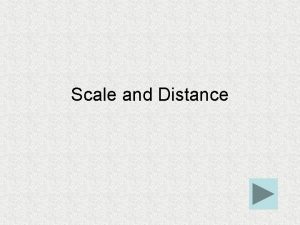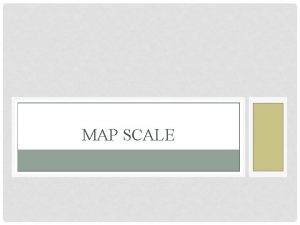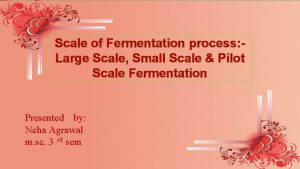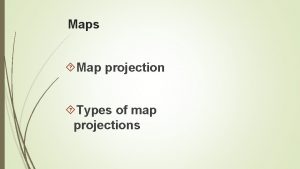Map Scale Large Scale and Small Scale Maps










- Slides: 10

Map Scale

Large Scale and Small Scale Maps Scale determines the amount of detail a map will show. Large Scale Maps: show a large amount of detail and a small area. e. g. 1: 50 000, 1: 25 000 Small Scale Maps: show a small amount of detail over a large area. e. g. 1: 250 000, 1: 500 000 *a map of the world that fits on an 8. 5 x 11 inch piece of paper has a scale of 1: 100 million.

A large scale map shows a small area with a lot of detail 1 : 25 000

A small scale map shows a small area in great detail 1 : 100 000

Map Scale Direct Statement (DS): a statement about a distance on the map in comparison to the represented distance in the real world. e. g. “one centimetre represents four kilometres” “three centimetres represents eight kilometres”

Map Scale Linear Scale (LS): a straight line divided into units which can be used for measuring distance on a map.

Map Scale • Representative Fraction (RF): a fraction that involves no mention of units. Because units are ignored, whatever you assign to one side must be assigned to the other. e. g. 1: 50 000 could become, 1 cm : 50 000 cm or, 1 m : 50 000 m or, 1 “size 11 boot” : 50 000 “size eleven boots”

Scale: The Town of Gorham, Maine

Question If we were to go outside and next to the school there was a map of the classroom that was exactly the same size as the classroom, what would be the RF scale of the map? Answer 1: 1

To the Textbook!! Using the “Making Connections” text, complete the following exercises in your notes. P. 48 #1, 2 ab, 3 a, 4, 5, 6 abc, 7, 8 abc, 10 (conversion) P. 49 #13, 14, 15
 Large scale vs small scale map
Large scale vs small scale map Definition of scale of map
Definition of scale of map Map scale ratio
Map scale ratio Topographic map of bangladesh
Topographic map of bangladesh Geography skills handbook
Geography skills handbook Small scale maps
Small scale maps Reittihaku google maps
Reittihaku google maps Large map scale
Large map scale How do maps help focus the reader's attention
How do maps help focus the reader's attention A ball rolling down an incline has its minimum speed
A ball rolling down an incline has its minimum speed How to know if an effect size is small medium or large
How to know if an effect size is small medium or large
